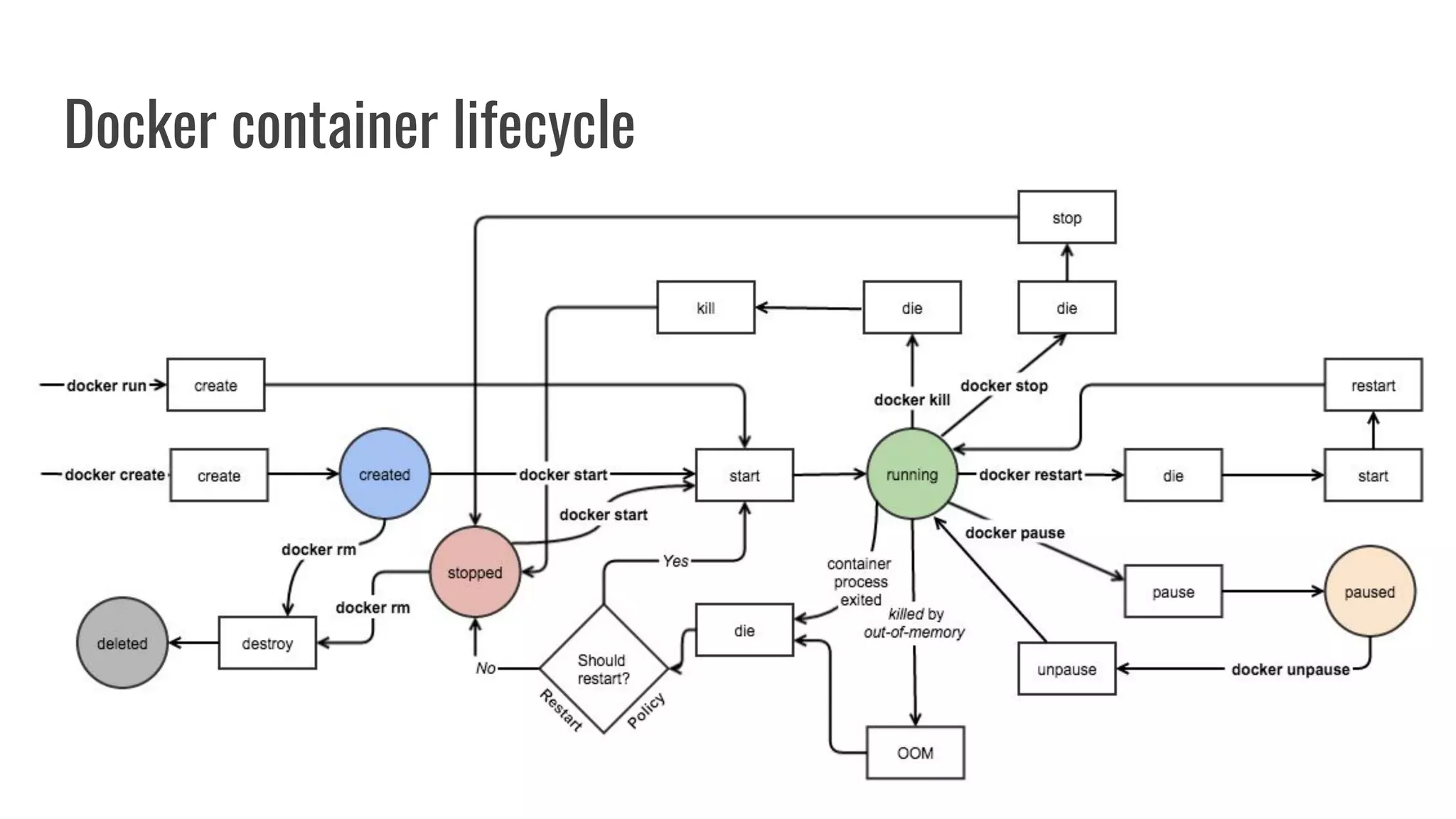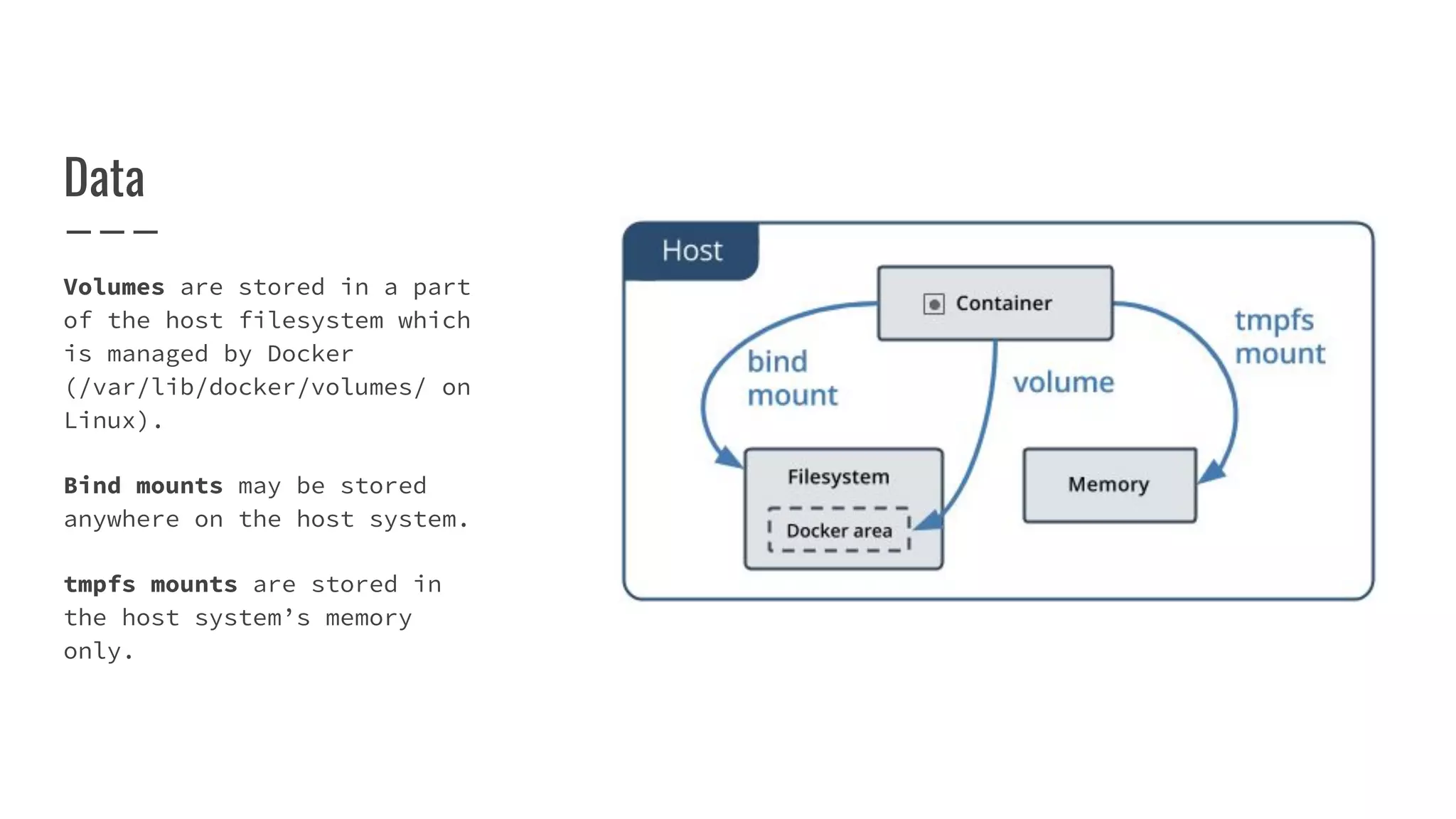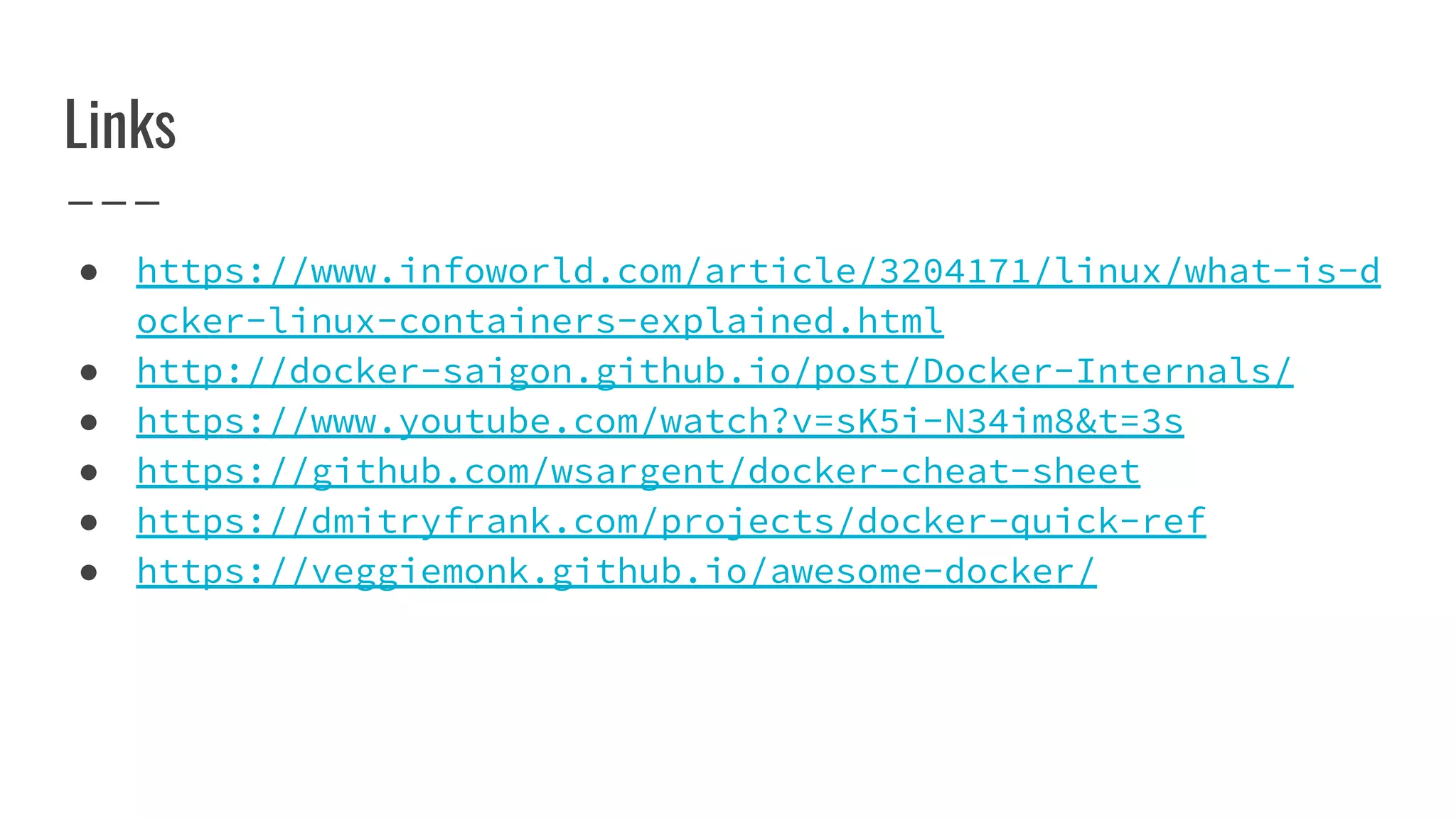Docker allows for the use of lightweight containers that share the host operating system kernel. Containers isolate applications from one another and provide a way to package applications with their dependencies. Containers use resource isolation features and union file systems for efficiency. Docker images are built from layers and can be distributed. The Docker ecosystem includes tools for the container lifecycle, networking, storage, and distribution of images.
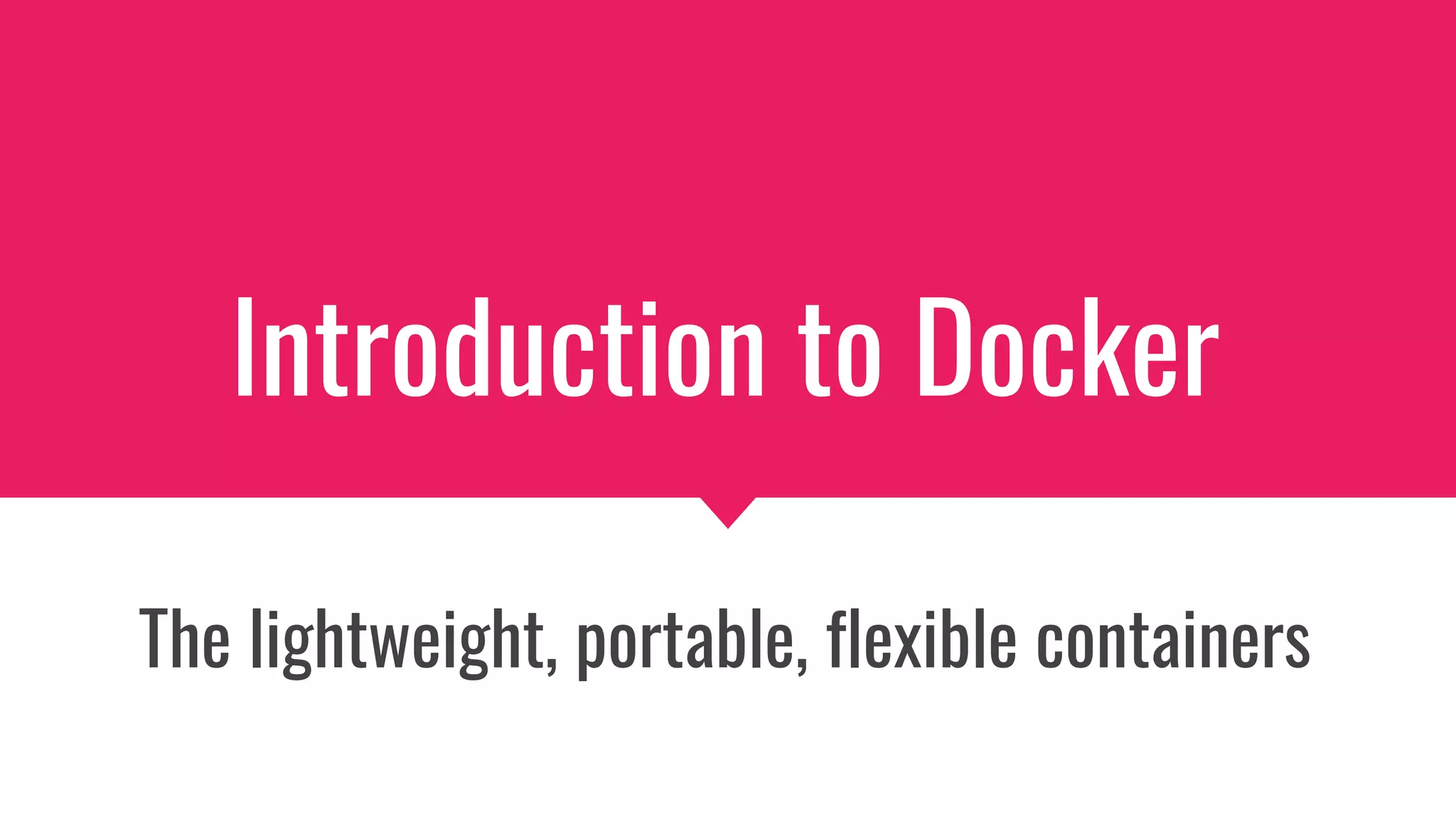
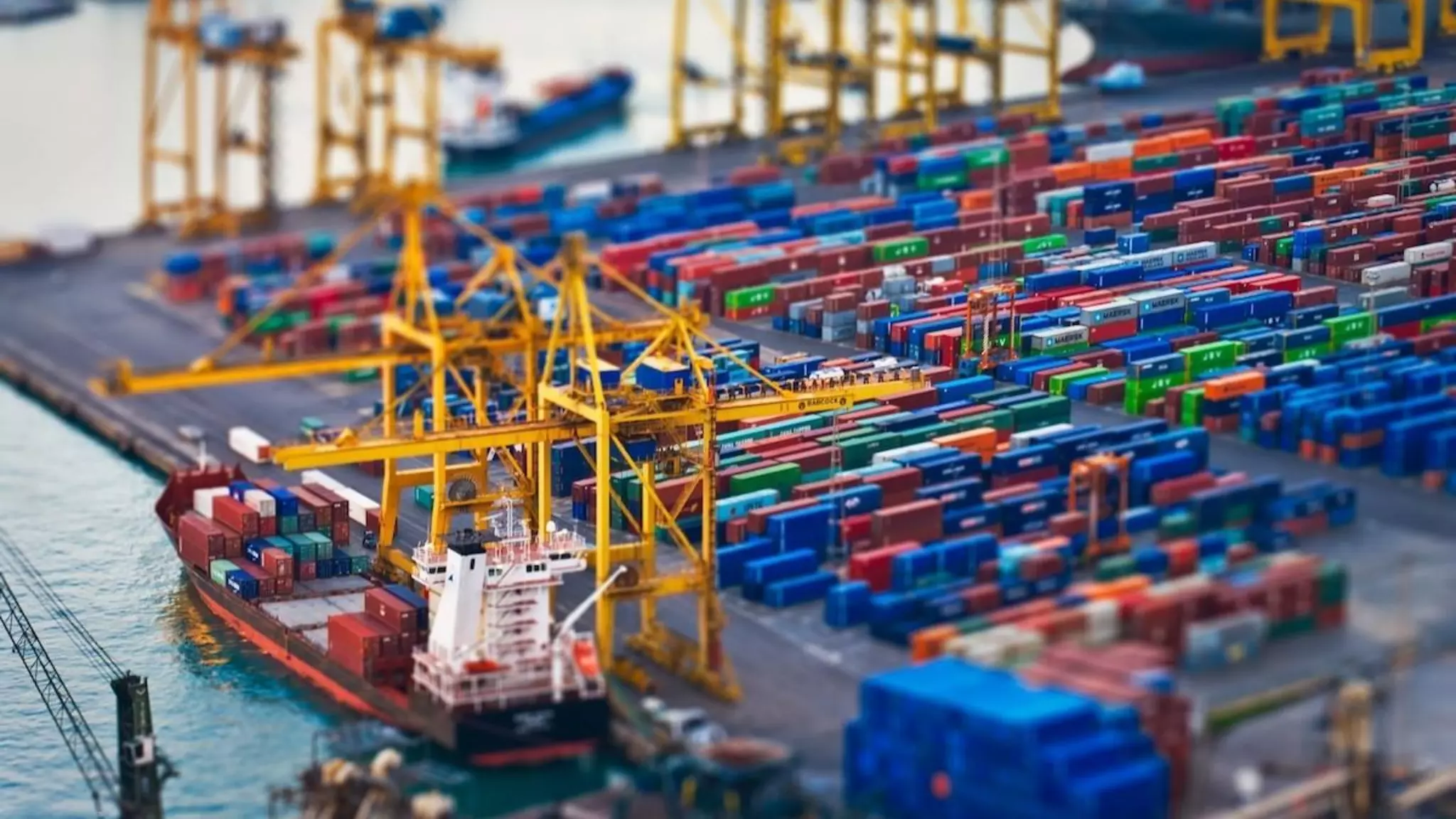
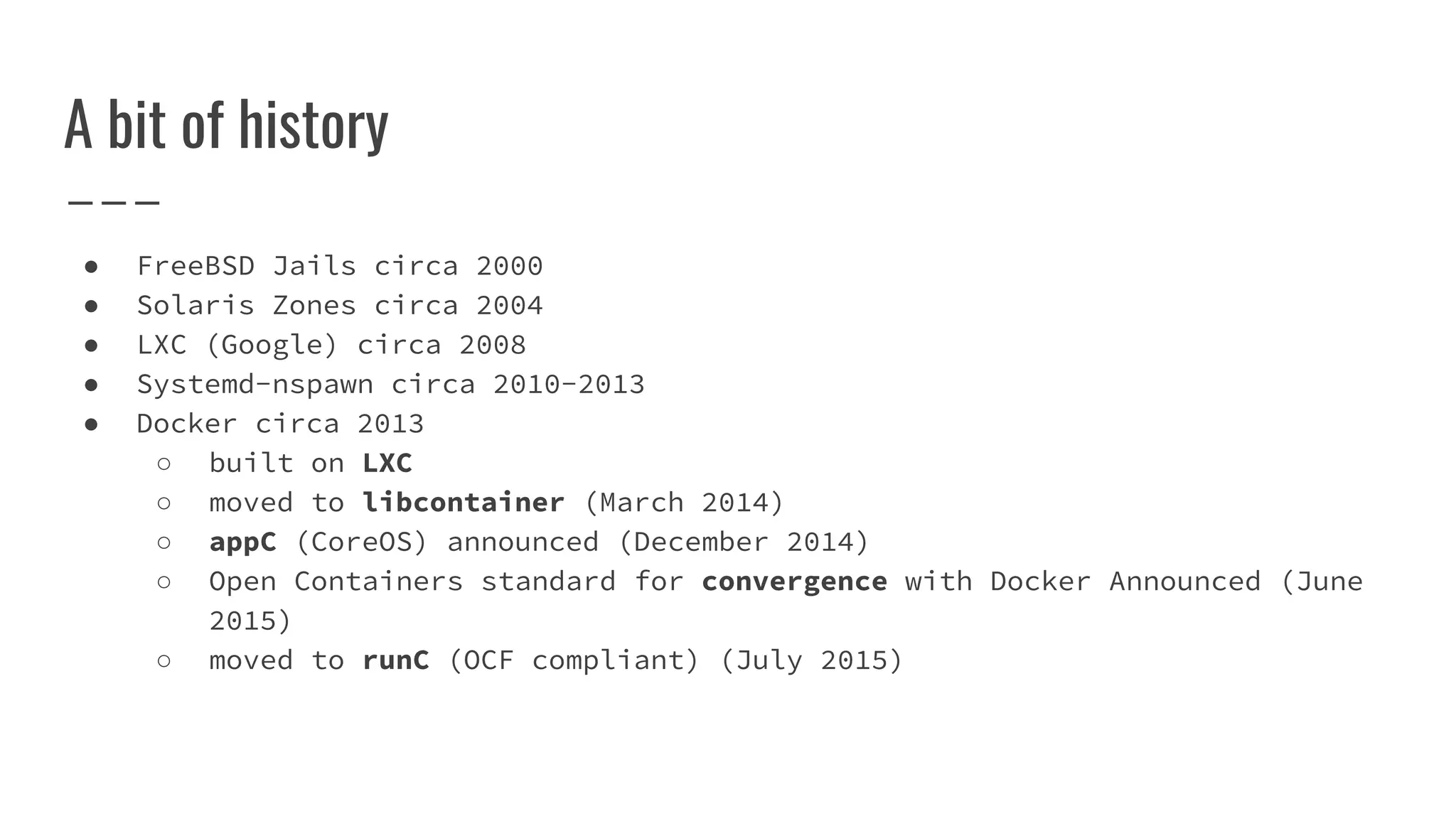
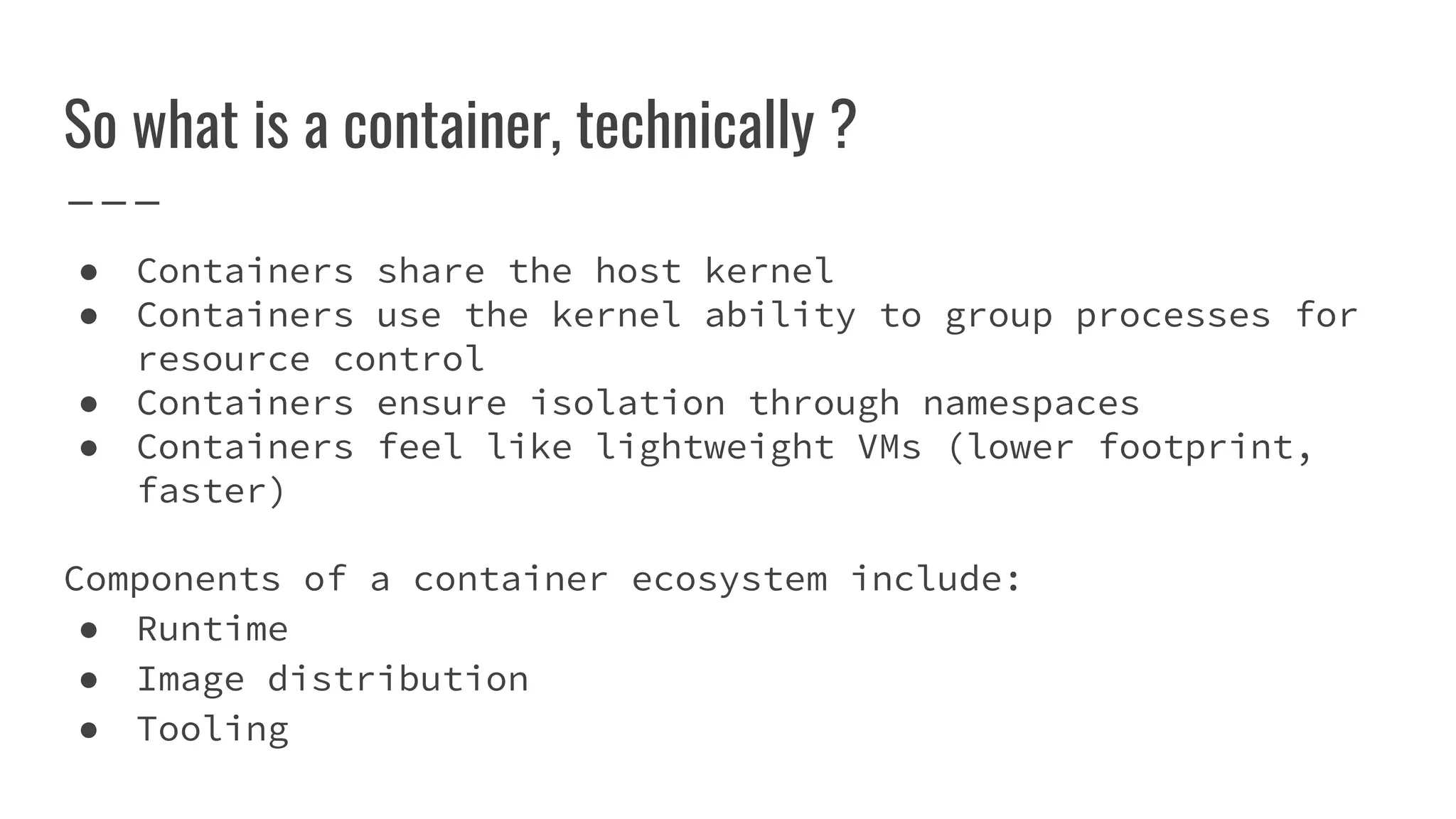

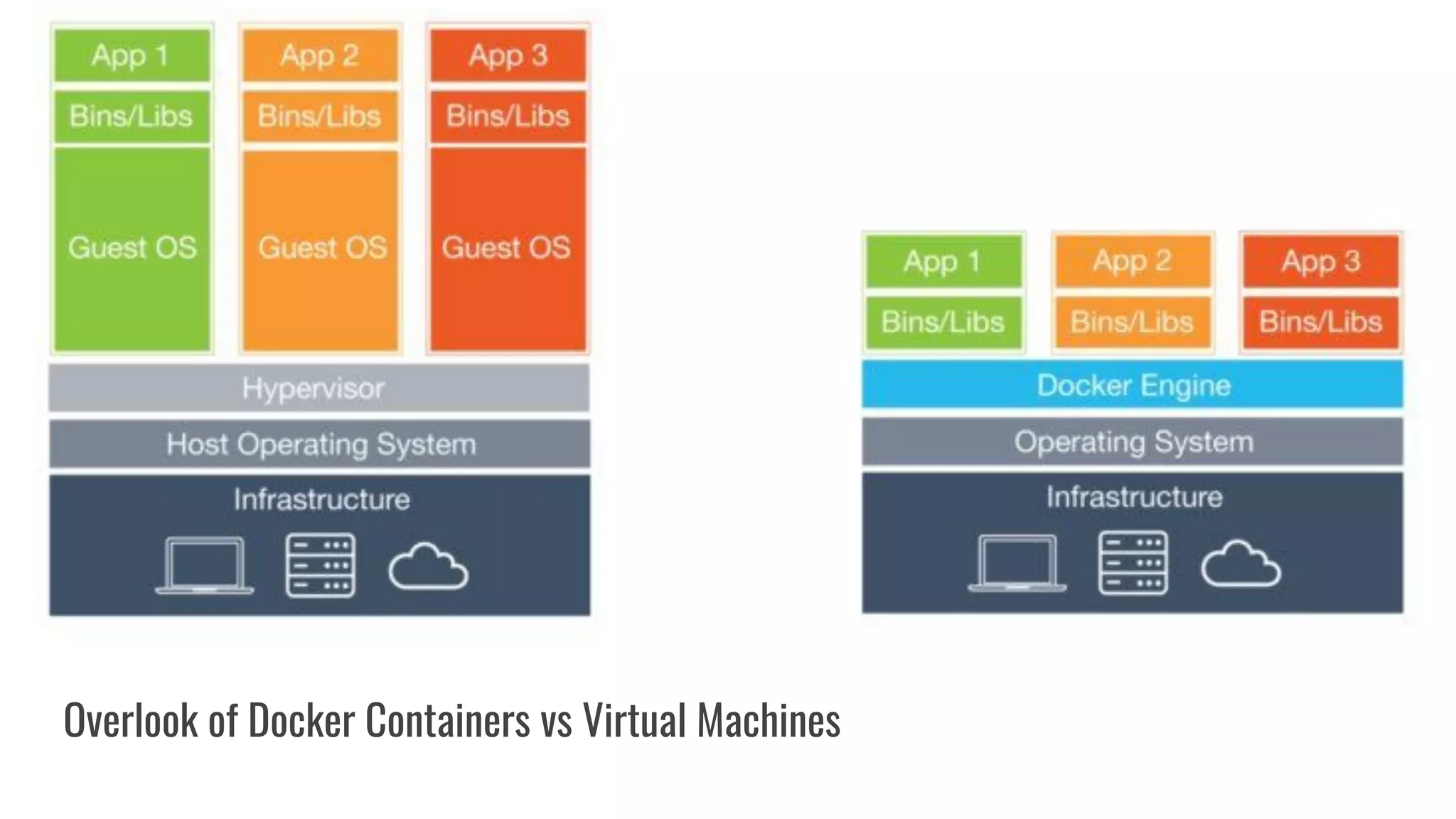
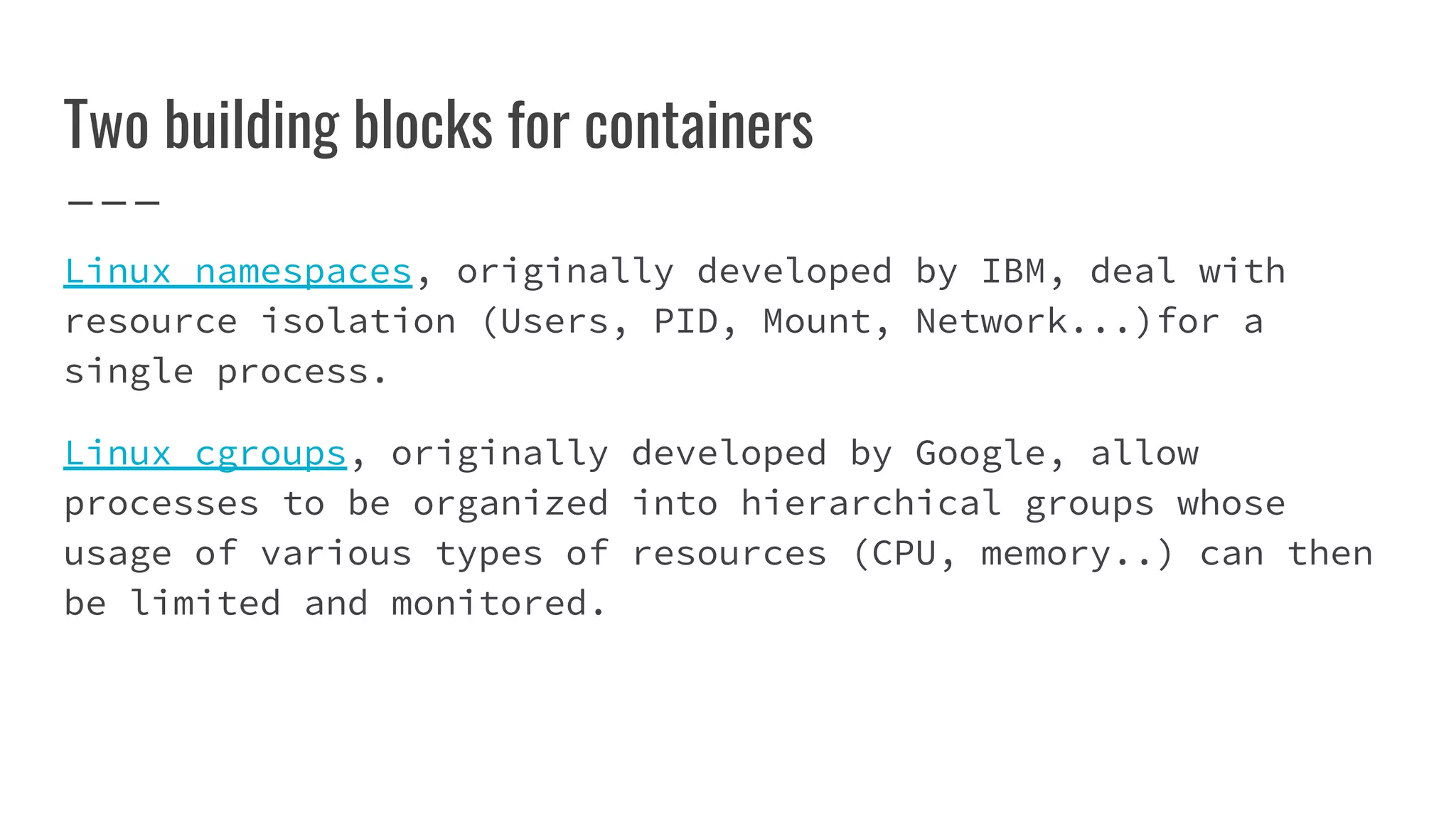
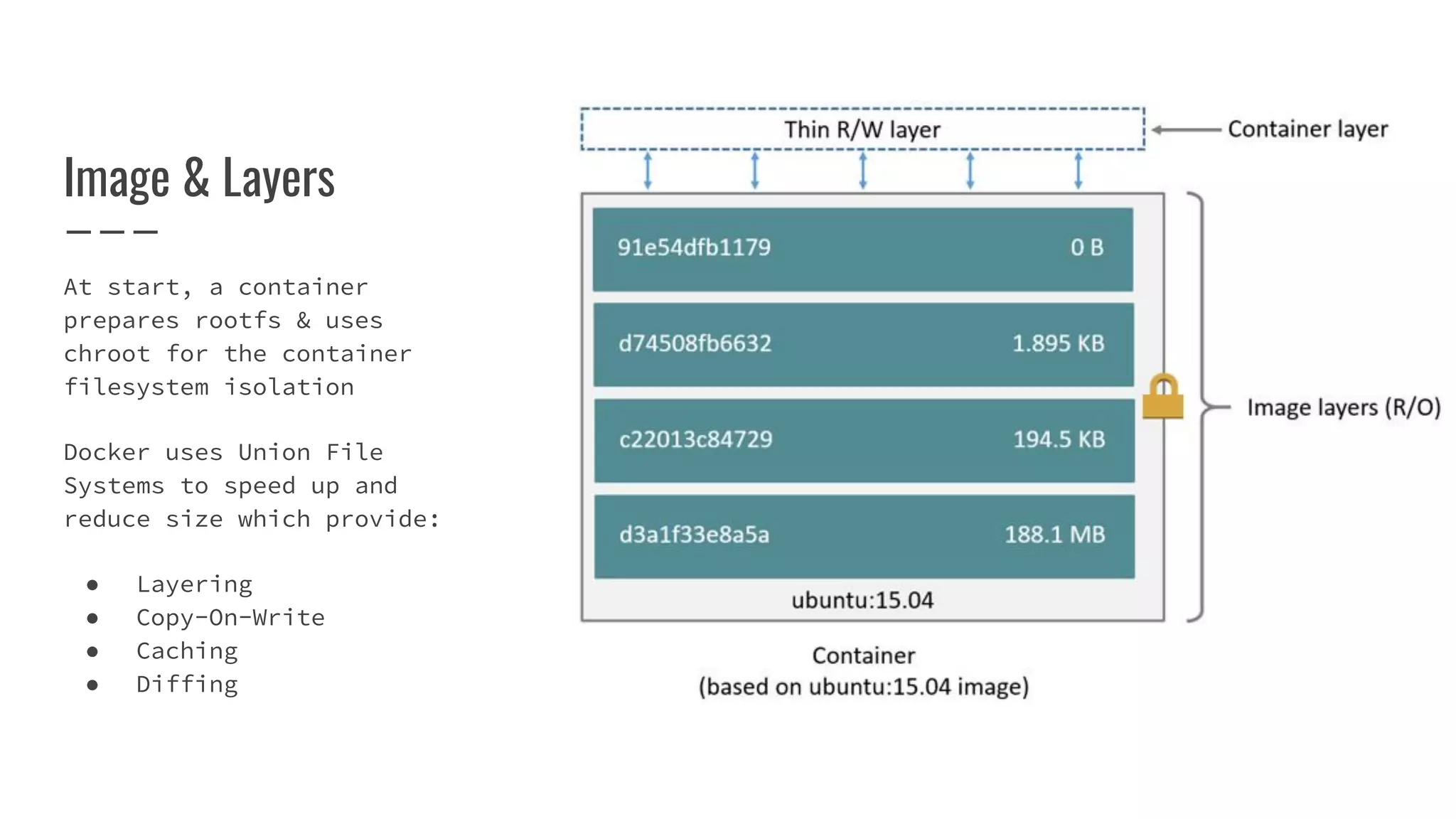
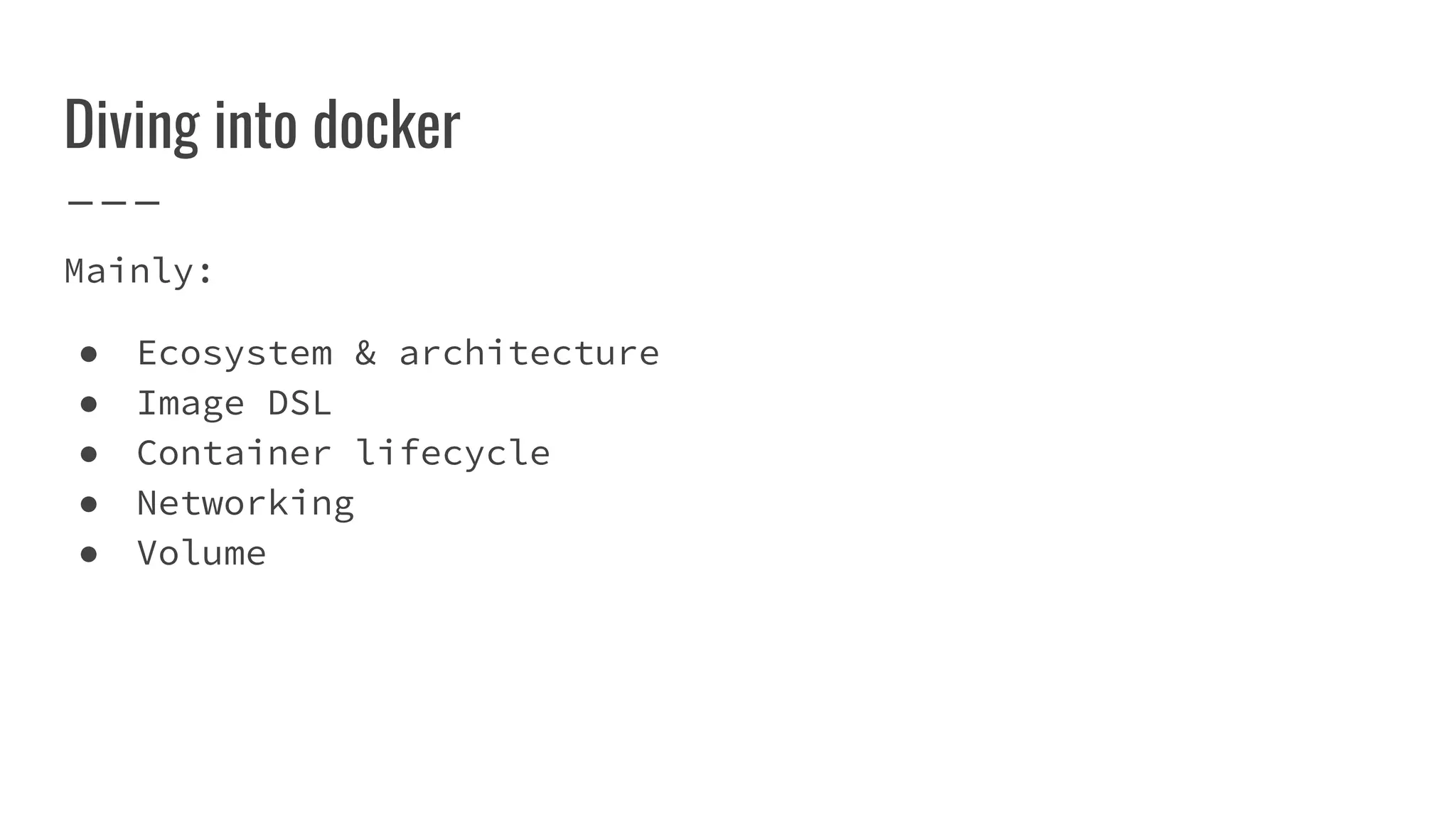
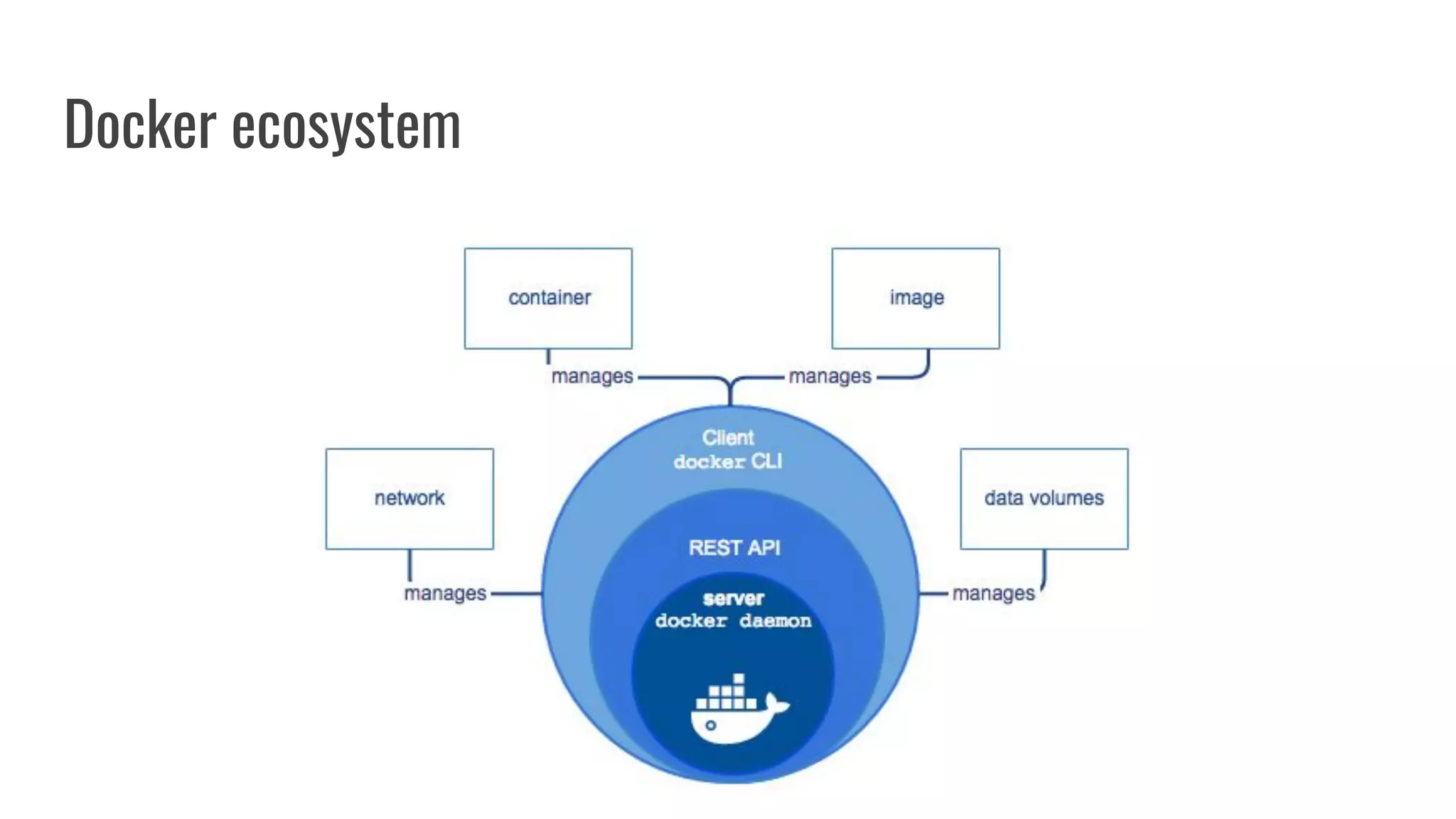
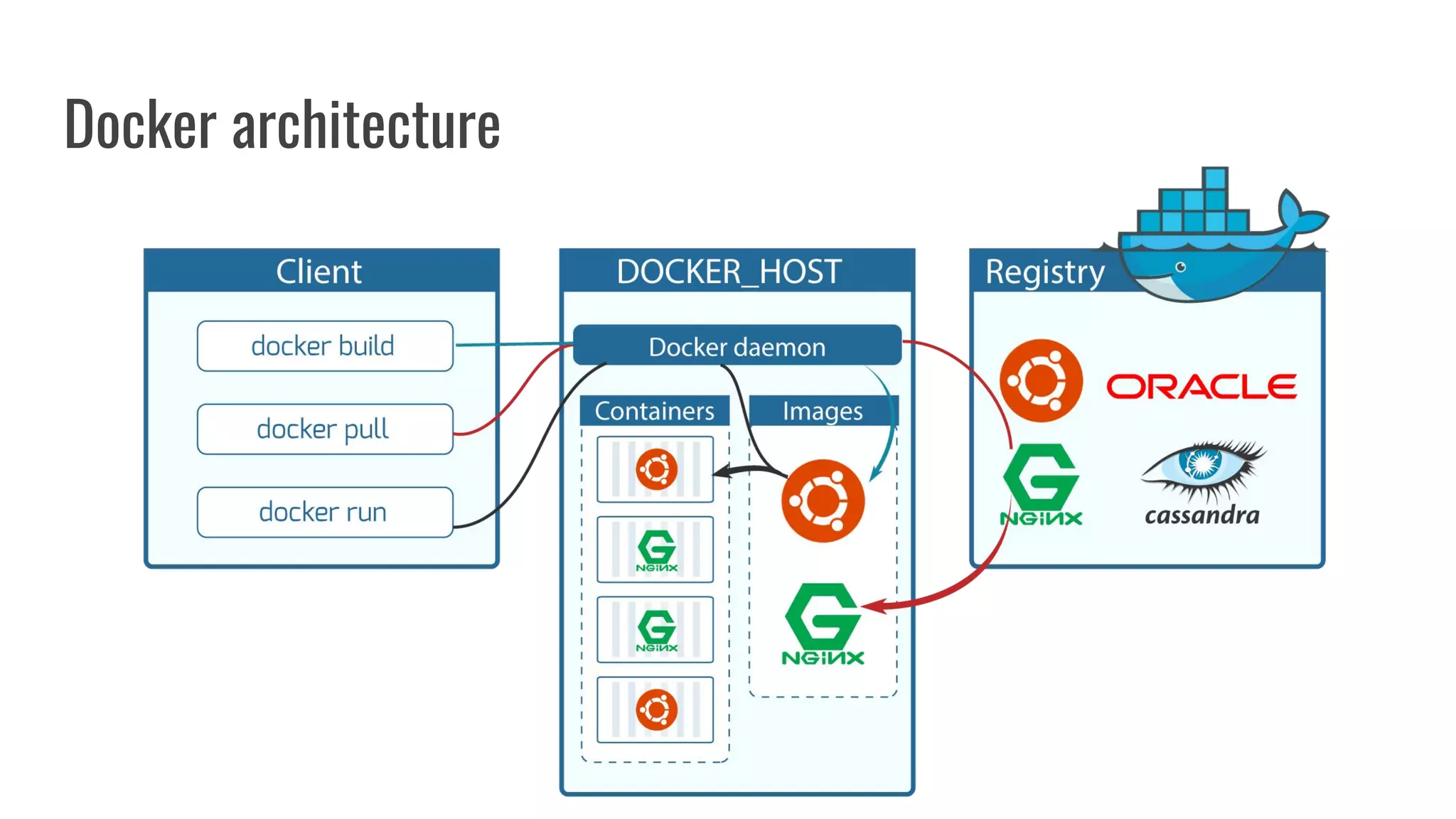
![Docker - Image DSL example
FROM ubuntu
RUN apt-key adv --keyserver hkp://keyserver.ubuntu.com:80 --recv 7F0CEB10 && echo 'deb
http://downloads-distro.mongodb.org/repo/ubuntu-upstart dist 10gen' | tee
/etc/apt/sources.list.d/mongodb.list
RUN apt-get update && apt-get install -y mongodb-10gen
RUN mkdir -p /data/db
EXPOSE 27017
CMD ["--port 27017"]
ENTRYPOINT usr/bin/mongod](https://image.slidesharecdn.com/dockerintroduction-180306065746/75/Docker-introduction-for-Carbon-IT-12-2048.jpg)
